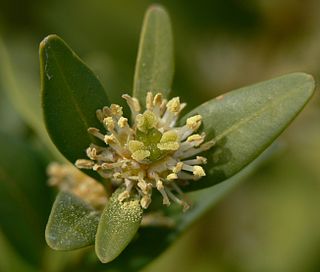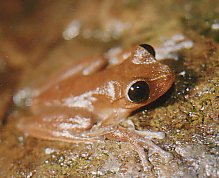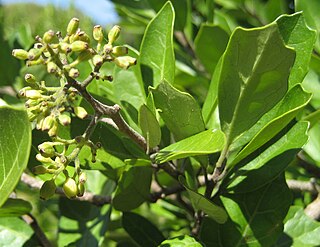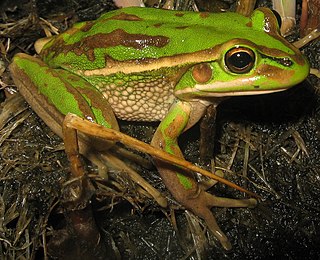| Paratomellidae | |
|---|---|
| Scientific classification | |
| Domain: | Eukaryota |
| Kingdom: | Animalia |
| Phylum: | Xenacoelomorpha |
| Order: | Acoela |
| Family: | Paratomellidae Dörjes, 1966 |
| Paratomellidae | |
|---|---|
| Scientific classification | |
| Domain: | Eukaryota |
| Kingdom: | Animalia |
| Phylum: | Xenacoelomorpha |
| Order: | Acoela |
| Family: | Paratomellidae Dörjes, 1966 |
There are two genera recognised in the family Paratomellidae. [1]
There are three species recognised in the family Paratomellidae. [1]
| Name | Image | Distribution | Description |
|---|---|---|---|
| Hesiolicium inops Crezee & Tyler 1976 | |||
| Paratomella rubra Rieger & Ott 1971 | |||
| Paratomella unichaeta Dörjes 1966 | |||

Tetraodontiformes, also known as the Plectognathi, is an order of ray-finned fishes which includes the pufferfishes and related taxa. This order has been classified as a suborder of the order Perciformes, although recent studies have found that it, as the Tetraodontoidei, is a sister taxon to the anglerfish order Lophiiformes, called Lophiodei, and have placed both taxa within the Acanthuriformes. The Tetraodontiformes are represented by 10 extant families and at around 430 species overall. The majority of the species within this order are marine but a few may be found in freshwater. They are found throughout the world.

Sparidae is a family of ray-finned fishes belonging to the order Spariformes, the seabreams and porgies, although they were traditionally classified in the order Perciformes. They are found in shallow temperate and tropical waters around the world and are demersal carnivores.

The Worshipful Company of Tylers and Bricklayers is one of the livery companies of the City of London. The organisation of Tylers and Bricklayers existed in 1416; it was incorporated by a royal charter in 1568. Originally, the company possessed a monopoly over bricklaying within the City of London. However, after the Great Fire of London, the king decreed that brick or stone, instead of timber, should be used as the main supporting structure of buildings. There was too much rebuilding to be done by only the Tylers' and Bricklayers' Company; craftsmen from across England were summoned, and the monopoly was terminated. The company now exists, along with most livery companies, primarily as a charitable body. The company also supports various building schools.

The Buxaceae are a small family of six genera and about 123 known species of flowering plants. They are shrubs and small trees, with a cosmopolitan distribution. A seventh genus, sometimes accepted in the past (Notobuxus), has been shown by genetic studies to be included within Buxus.

Ostraciidae or Ostraciontidae is a family of squared, bony fish belonging to the order Tetraodontiformes, closely related to the pufferfishes and filefishes. Fish in the family are known variously as boxfishes, cofferfishes, cowfishes and trunkfishes. It contains about 23 extant species in 6 extant genera.

Nyctimystes is a genus of tree frogs in the subfamily Pelodryadinae of the family Hylidae. They are principally Papuan species, but also inhabit islands in the Moluccas. All species in this genus have one distinct feature that separates them from other species in the family, the lower eyelid is marked with pattern of lines, veins, or dots. This feature presumably acts as camouflage when the frogs are at rest during the day.

Pseudophryne is a genus of small myobatrachid frogs. All of these frogs are small terrestrial frogs, and as such, most species are commonly called toadlets. The genus comprises thirteen species, ten from eastern Australia, and three from Western Australia. Species within the genus Pseudophryne lay their eggs on moist ground. The tadpoles develop within the eggs, and once they reach hatching size, will become dormant. Once sufficient rain occurs to flush the eggs into a creek or river, the eggs will hatch and release tadpoles into the water. Many of the species within this genus have the ability to form hybrids.

Convolutidae is a family of acoels, belonging to the phylum Xenacoelomorpha. This family contains more than a third of all known acoel species.

Acoela, or the acoels, is an order of small and simple invertebrates in the subphylum Acoelomorpha of phylum Xenacoelomorpha, a deep branching bilaterian group of animals, which resemble flatworms. Historically they were treated as an order of turbellarian flatworms. About 400 species are known, but probably many more not yet described.
Hemimacronyx is a proposed genus of birds in the pipit and wagtail family Motacillidae. It contains two species that are usually treated as belonging to two larger genera, Macronyx and Anthus. The plumage of the two species is more similar to that of the longclaws and the golden pipit, having brown barred backs and bright yellow breasts and throats. They are presumed to be closely related to these two groups, but the split has not been widely recognised. Both species are found in open areas of Africa. They are both threatened with extinction due to human activities, principally habitat loss.
Romankenkius is a genus of freshwater planarian in the family Dugesiidae.

Pennantia is the sole genus in the plant family Pennantiaceae. In older classifications, it was placed in the family Icacinaceae. Most authorities have recognised three or four species, depending on whether they recognised Pennantia baylisiana as a separate species from Pennantia endlicheri. British-born botanist David Mabberley has recognised two species.
Dakuidae is a family of acoels.
Diopisthoporus is a genus of acoels. It is the only genus in the monotypic family Diopisthoporidae
Nadina is a genus of acoels. It is the only genus in the monotypic family Nadinidae.

Isodiametridae is a family of acoels.
Otocelididae is a family of acoels.

Araripemydidae is a family of freshwater aquatic turtles belonging to the order Pleurodira, known from the Early Cretaceous of South America and Africa. The family contains two recognised monotypic genera, Araripemys and Taquetochelys, from the Santana Group of Brazil and the Elrhaz Formation of Niger, respectively, which date to the Aptian-Albian stages of the Early Cretaceous. They are consider to be the most basal lineage within the Pelomedusoides. They are thought to have been specialised suction feeders. Laganemys was named in 2013 but was later determined to be synonymous with Taquetochelys.

Ranoidea is a genus of frogs in the subfamily Pelodryadinae. They are found in Australia, New Guinea, and two nearby groups of islands: the Maluku Islands, and the Louisiade Archipelago. The circumscription of this taxon is still controversial.
Hesiolicium is a genus of acoels belonging to the family Paratomellidae.